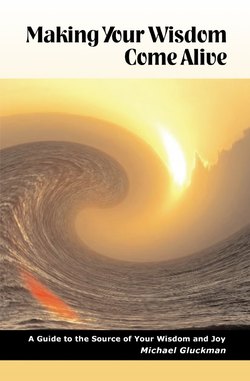Читать книгу Making Your Wisdom Come Alive - Michael PhD Gluckman - Страница 8
На сайте Литреса книга снята с продажи.
Where can I go?
ОглавлениеIf you are just starting your meditation practice, or if you are reevaluating it, it’s time to ask a few questions. You can ask: what is the potential for meditation? Where do I want to go with my meditations and how can I possibly get there?
Meditation is the process of making that which is spiritual your own experience. Here we are using spiritual to mean anything that is nonphysical. This covers a wide ground.
Some meditation practices such as Hatha Yoga involve working with physical postures and with the breath. Others work with visualizations or controlling the mind. Other practices lead to subtle experiences (non physical experiences) including out of the body experiences, seeing subtle light or hearing subtle sounds. Some work with subtle energies such as kundalini or with ki (chi).
We are not here to criticize these various practices. We know that people have a wide variety of desires and that is part of what makes the world a beautiful place. Oftentimes, however, people start a meditation path without asking the question: “Is this meditation practice going to take me where I really want to go?” Life is too short to spend it moving towards the wrong goals. Especially when you discover that you were born with a powerful rocket that can take you to unimaginable heights.
Other people just outgrow their path. They feel that their meditation has gone flat. The intriguing quality that it once had seems to have left. At that point people tend to blame themselves, “It couldn’t be the meditation, it must be me. Somehow I am just not disciplined enough these days.” We recommend sticking to your meditation — don’t slack off. At the same time be sensitive to be sure you are growing in the direction that you want. If not, then reevaluate your meditation.
Lets start off with a benchmark. How far or how high can your meditations go? It’s no accident that I started off with a quote from Jesus in “The Gospel According to Thomas” about transcending death.
Incidentally, “The Gospel According to Thomas” is not one of the four standard books in the New Testament. However, there were many more gospels and books on Jesus’s teaching that were lost when the church leaders decided which books to use in the New Testament. “The Gospel According to Thomas” was discovered again in Nag Hammadi and is part of the “The Nag Hammadi Library.”
In our case though, we want books with instructions that can help us to deepen our meditations, and can point us to higher ground. Therefore we welcome the discovery of the “The Nag Hammadi Library.”
So where can you go? Could you understand the essential teachings of Jesus or any other Sage from any religion and not taste death? The answer is an unqualified yes. But before we go into detail on how this is possible, I want to introduce the path of knowledge.
